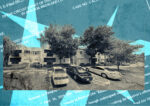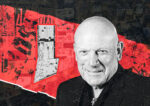The key developers who helped birth the regrowth of Miami’s top neighborhoods discussed the challenges and successes of developing in areas like MiMo, Coconut Grove and Overtown during The Real Deal’s second annual South Florida Forum & Showcase at the Moore Building on Thursday.
Ana Codina Barlick, a panelist and CEO of Codina Partners, is developing Downtown Doral, a $1 billion project that will include 2,840 residential units, charter school, a 3-acre park, and Main Street, which will have more than 180,000 square feet of retail and more than 1 million square feet of office space.
She said the city’s permanent population is 45,000. During the daytime, that triples, creating “crippling traffic.”
“People are over being 45 minutes each way in their car,” she said. “There are zero options for a high-quality lifestyle that’s not suburbia.”
The charter school, which opened in August, has a waiting list of more than 700 children. Residents of Downtown Doral have an edge over non-residents, Codina said.
Avra Jain, founder of the Vagabond Group, said that walkability and density already existed in MiMo when she purchased the Vagabond in 2013.
“The reason why we were able to do it quickly was because it was main street before and we were just bringing it back. The residential was there. The fundamentals were there. The walkability and density existed,” Jain said.
MiMo, the historic district between the 27 blocks on Biscayne Boulevard from 50th Street to 77th Street, is undergoing a resurgence of redevelopment.
Jain cited tenants moving in such as Büro, a co-working space company, which opened its third location at 7300 Biscayne Boulevard this summer. Restaurant groups from Miami Beach are also looking in the area, she said.
“We all know what that looked like two years ago. We had our blinders on driving through because of the business being conducted there – a lot of prostitution,” she said. “A lot of people thought we were crazy … They knew I was out of the box but they thought I was way out of the box.”
Now, more investors and potential property owners are coming into the neighborhood, which Jain said is a good thing. The problem? Flippers.
“The trick is to get other people in your neighborhood who are like-minded,” she said.
Jain is also active in the Miami River area, where she purchased the Miami River Inn for $8.6 million in April.
“When you have a lot of small property owners, it’s very difficult to get on the same page,” she said, applauding Wynwood’s Business Improvement District and subsequent rezoning.
Joe Furst, managing director of Goldman Properties, said that current zoning hinders the development of viable and successful residential projects. The area’s neighborhood revitalization district plan, which will affect about 205 acres, will go into effect on Oct. 24.
Earlier this month, 250 Wynwood recorded its first closings. The 11-unit, six-story building marks the first new residential project in the Wynwood Arts District this cycle.
“I think Wynwood in the future will be the most diverse and most interesting place to be in the city,” Furst said.
Goldman is working on an eight-story parking garage, which will bring 428 parking spaces to the neighborhood and include 21,000 square feet of retail.
“Every decision we made was, ‘how do we make this the most exciting place on the human scale?'” Furst said, referring to incorporating favorable setbacks into the garage’s design. “We don’t want to lose the character of Wynwood. It’s a much different type of framework.”
Michael Comras, who recently sold an assemblage on Lincoln Road for $370 million, the second most expensive sale in Miami-Dade County history, said linking these neighborhoods is key to Miami’s growth and success.
District 36, for example, is on the border of Midtown Miami and the Design District. Comras said it will serve to connect the two areas, as well as Wynwood to the south. “Ultimately, that will all connect,” he said.
Walkability is a component of that.
“Being walkable, being sustainable is very important. People don’t want to leave their neighborhoods anymore,” Comras said. “When you look at the number of students – we have 6,000 students coming to Coconut Grove every day.”
Comras said in the Grove, which has also seen a resurgence of residential and commercial activity, he’s finding that tenants who left want to come back. Comras is also part of the new ownership that paid $87.5 million for CocoWalk in May.
Transit is also part of connecting these neighborhoods and cities.
Nitin Motwani, managing principal of the 30-acre Miami Worldcenter project, said “the single most important thing we should be focusing on is transit and connectivity.”
Motwani proposed new transit options such as a bay link or streetcar that connects to areas like Wynwood.
Miami Worldcenter, which was scheduled to break ground in the third quarter, will do so before the end of the year, he said. “We have 30 acres of land and 28 of it is vacant,” Motwani said. “A lot of it has to be built at the same time. You can’t build block by block.”
Buyers from 32 countries have reserved units at Paramount Miami Worldcenter, and Motwani cited the nearby success of the Performing Arts Center, Perez Art Museum Miami and the Miami Heat.
All Aboard Florida, which is building its MiamiCentral station – a nine-acre mixed-use development that will be the final stop for All Aboard’s Miami to Orlando rail service – is an example of transportation improvements in the Greater Downtown Miami region, according to Motwani.
Back when he and his partners began their assemblage in Overtown and the surrounding area, “we had hundreds of meetings where [potential investors] came to Miami. People just thought we were stupid,” he said. “Now, they think we were lucky.”




